Abstract
Ultraviolet (UV) light causes a specific leakage of K+ from cultured rose cells (Rosa damascena). During K+ efflux, there is also an increase in extracellular HCO3− and acidification of the cell interior. We hypothesized that the HCO3− originated from intracellular hydration of respiratory CO2 and served as a charge balancing mechanism during K+ efflux, the K+ and HCO3− being cotransported out of the cell through specific channels. An alternative hypothesis which would yield similar results would be the countertransport of K+ and H+. To test these hypotheses, we studied the effect of a range of external pH values (pH 5-9), regulated by various methods (pH-stat, 100 millimolar Tris-Mes buffer, or CO2 partial pressure), on the UV-induced K+ efflux. Both UV-C (<290 nanometers) and UV-B (290-310 nanometers) induced K+ efflux with a minimum at about pH 6 to 7, and greater efflux at pH values of 5, 8, and 9. Since pH values of 8 and 9 increased instead of reduced the efflux of K+, these data are not consistent with the notion that the efflux of K+ is dependent on an influx of H+, a process that would be sensitive to external H+ concentration. We suggest that the effect of pH on K+ efflux may be mediated through the titration of specific K+-transporting proteins or channels in the plasma membrane. Since we could not detect the presence of carbonic anhydrase activity in cell extracts, we could not use the location of this enzyme to aid in our interpretation regarding the site of hydration of CO2.
Full text
PDF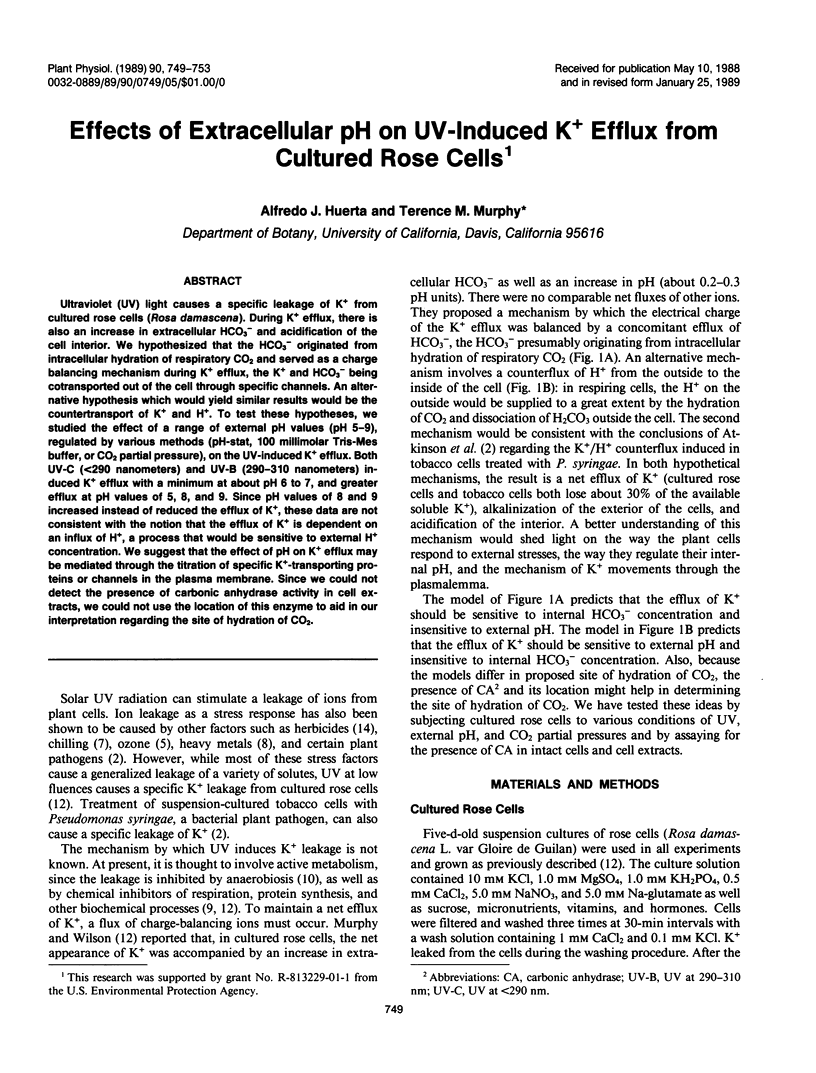
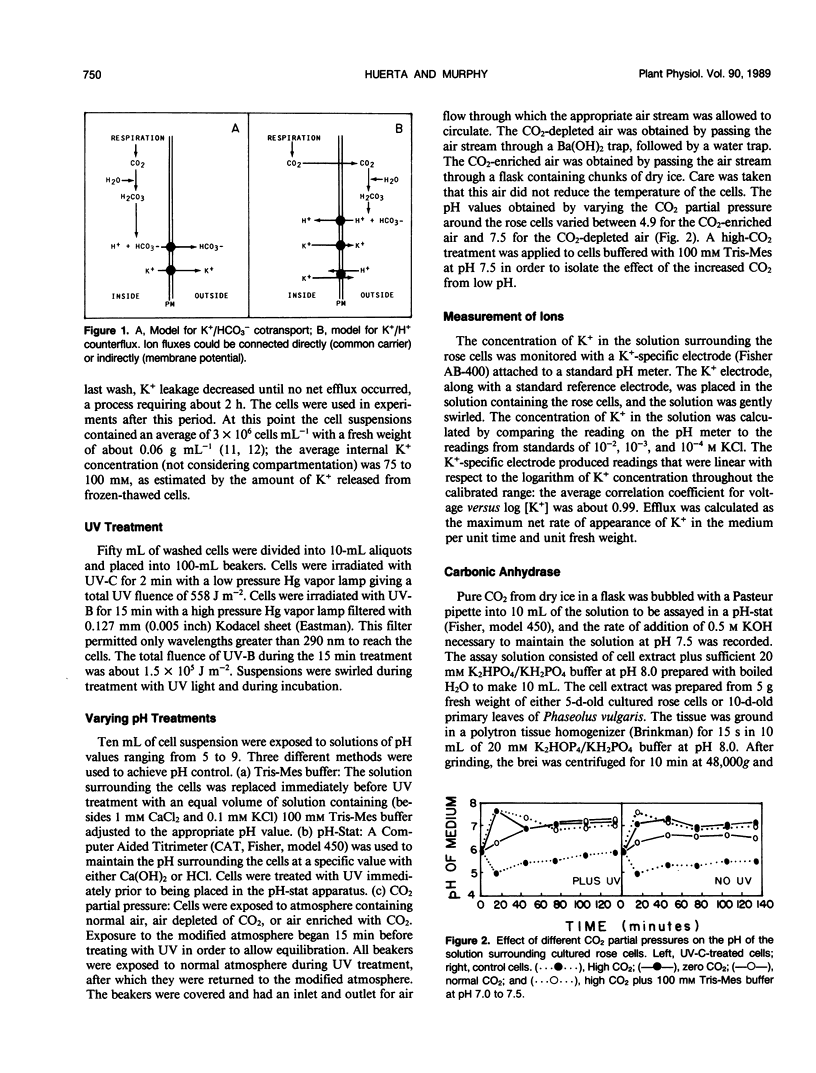
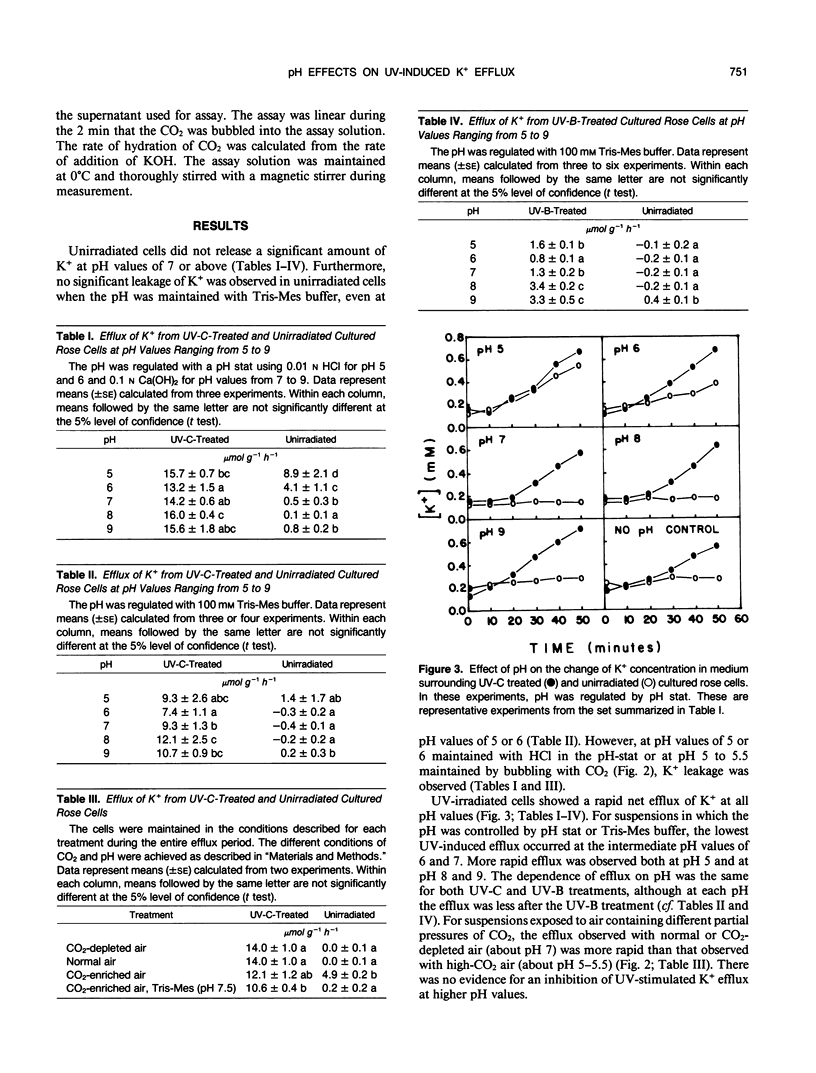
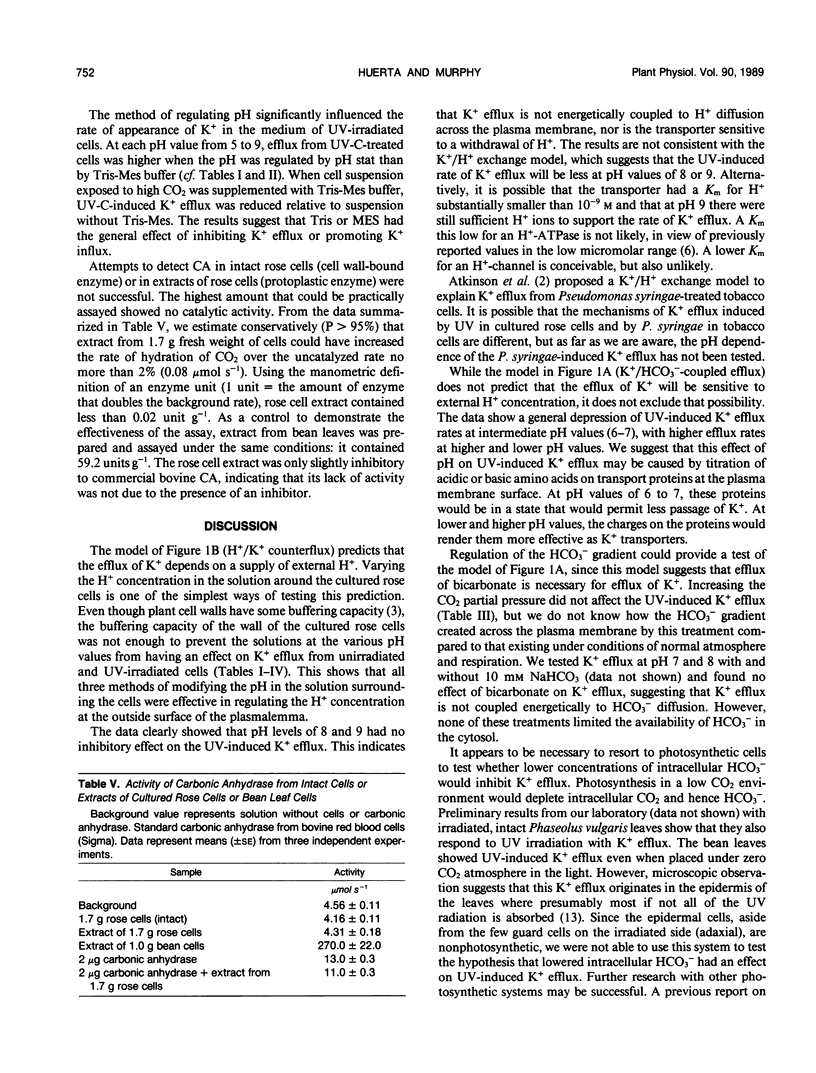
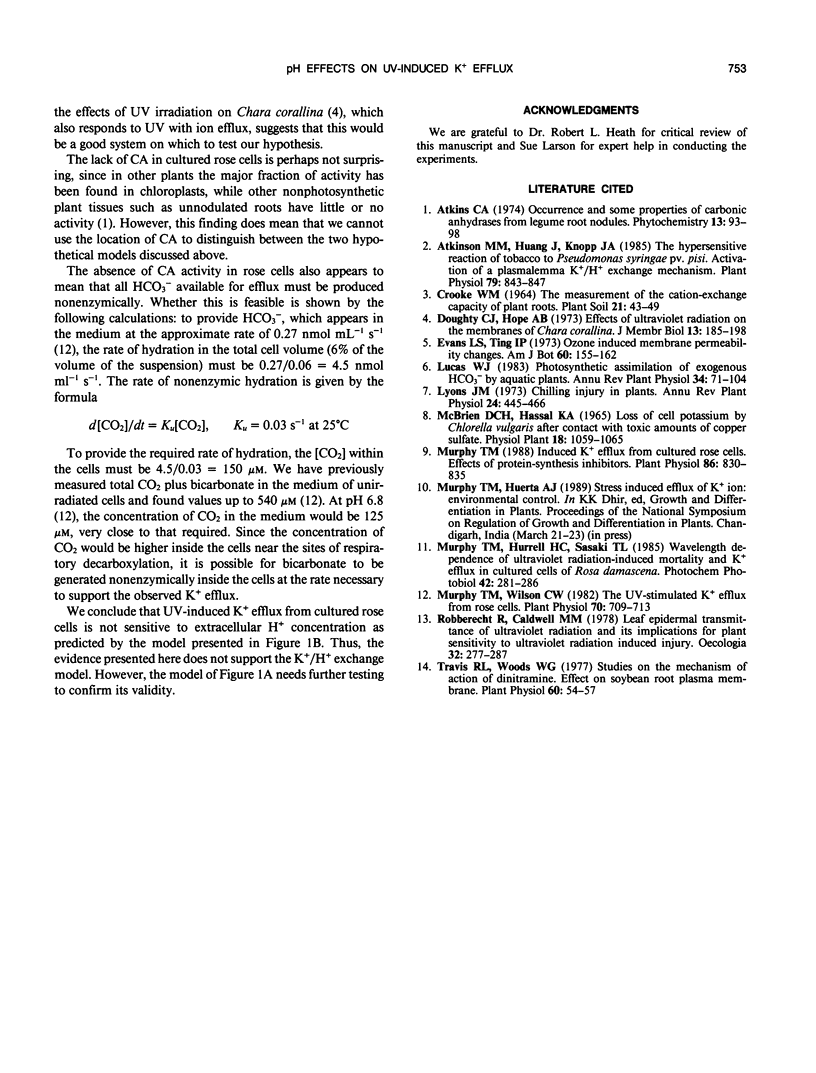
Selected References
These references are in PubMed. This may not be the complete list of references from this article.
- Atkinson M. M., Huang J. S., Knopp J. A. The Hypersensitive Reaction of Tobacco to Pseudomonas syringae pv. pisi: Activation of a Plasmalemma K/H Exchange Mechanism. Plant Physiol. 1985 Nov;79(3):843–847. doi: 10.1104/pp.79.3.843. [DOI] [PMC free article] [PubMed] [Google Scholar]
- Karpas A. B., Baer H., Hooton M. L., Evans R. A high molecular weight allergenic fraction of honeybee venom. J Allergy Clin Immunol. 1977 Sep;60(3):155–162. doi: 10.1016/0091-6749(77)90118-x. [DOI] [PubMed] [Google Scholar]
- Murphy T. M. Induced k efflux from cultured rose cells : effects of protein-synthesis inhibitors. Plant Physiol. 1988 Mar;86(3):830–835. doi: 10.1104/pp.86.3.830. [DOI] [PMC free article] [PubMed] [Google Scholar]
- Murphy T. M., Wilson C. UV-Stimulated K Efflux from Rose Cells: Counterion and Inhibitor Studies. Plant Physiol. 1982 Sep;70(3):709–713. doi: 10.1104/pp.70.3.709. [DOI] [PMC free article] [PubMed] [Google Scholar]
- Travis R. L., Woods W. G. Studies on the mechanism of action of dinitramine: effect on soybean root plasma membrane. Plant Physiol. 1977 Jul;60(1):54–57. doi: 10.1104/pp.60.1.54. [DOI] [PMC free article] [PubMed] [Google Scholar]


